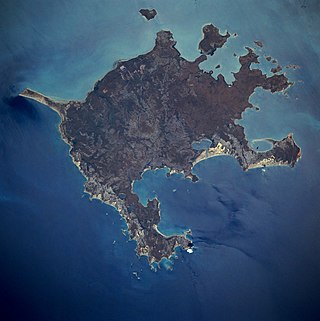Selected publications
This section's use of external links may not follow Wikipedia's policies or guidelines.(October 2020) |
Books
- Brown, S., A. Clarke and U.K. Frederick (eds) (2015). Object Stories. artifacts and archaeologists, (San Francisco: Left Coast Press).
- Clarke, A. and U.K. Frederick (eds) (2014) “Signs of the Times: Archaeological approaches to historical and contemporary graffiti”. Themed Section, Australian Archaeology 78. https://doi.org/10.1080/03122417.2014.11681999
- Harrison, R., S. Byrne, and A. Clarke (eds) (2013). Reassembling the Collection: Ethnographic Museums and Indigenous Agency. (Santa Fe, NM: SAR Press).
- Hobbins, P., U. K. Frederick and A. Clarke (2016) Stories from the Sandstone. Quarantine Inscriptions from Australia’s Immigrant Past (Crows Nest, Arbon Publishing).
- Torrence, R. and A. Clarke (eds) (2000). The Archaeology of Difference: Negotiating cross-cultural engagements in Oceania. One World Archaeology 38, (London: Routledge).
Articles and book chapters
- Clarke, A. (2000), “Time, Tradition and Transformation: the archaeology of intercultural encounters on Groote Eylandt, Northern Australia” in R. Torrence and A. Clarke (eds) The Archaeology of Difference: Negotiating cross-cultural engagements in Oceania. One World Archaeology 38, (London: Routledge), 142–181. https://doi.org/10.4324/9780203298817
- Clarke, A. (2002). “The Ideal and the real: cultural and personal transformations of archaeological research on Groote Eylandt, Northern Australia”. World Archaeology 34 (2): 249–264. https://doi.org/10.1080/0043824022000007080
- Clarke, A. (2000). ‘”The Moormans Trowsers’: Aboriginal and Macassan Interactions and the Changing Fabric of Indigenous Social Life’”. In S. O’Connor and P. Veth (eds) East of Wallace’s Line . (Rotterdam: A.A. Balkema) Modern Quaternary Research in Southeast Asia 16: 315-335.
- Clarke, A. (1994). “Romancing the Stones: the cultural construction of an archaeological landscape”, Archaeology inOceania 29: 1–15. https://www.jstor.org/stable/40386978
- Clarke, A., S. Colley and M. Gibbs (eds) (2012) Historical and contemporary archaeology in the Sydney Basin. Archaeology in Oceania 47 (2). https://www.jstor.org/stable/23265072
- Clarke, A. and U.K. Frederick (2016). ‘That was Then, This is Now: An Introduction to Contemporary Archaeology in Australia’. In U.K. Frederick and A. Clarke (eds) That was Then, This is Now: Contemporary Archaeology and Material Cultures in Australia . (Newcastle upon Tyne: Cambridge Scholars Publishing), 1–13.
- Clarke, A. and U.K. Frederick (2011), “Making a sea change: Rock art, archaeology and the enduring legacy of Frederick McCarthy's research on Groote Eylandt” in M. Thomas and M. Neale (eds) Exploring the Legacy of the 1948 American-Australian Scientific Expedition to Arnhem Land, (Canberra: ANU e-press), 135–155.
- Clarke, A., U.K. Frederick, & P. Hobbins (2017). 'No complaints': counter-narratives of immigration and detention in graffiti at North Head Immigration Detention Centre, Australia 1973–76. World Archaeology. https://doi.org/10.1080/00438243.2017.1334582
- Clarke, A. and A. Paterson (eds) (2003) Cross-Cultural Archaeology: An introduction. Archaeology in Oceania 38 (2). https://doi.org/10.1002/j.1834-4453.2003.tb00528.x
- Torrence, R. and A. Clarke (2016). "Excavating ethnographic collections: negotiations and cross-cultural exchange in Papua New Guinea". World Archaeology 48:2, 181-195 https://doi.org/10.1080/00438243.2016.1146161









